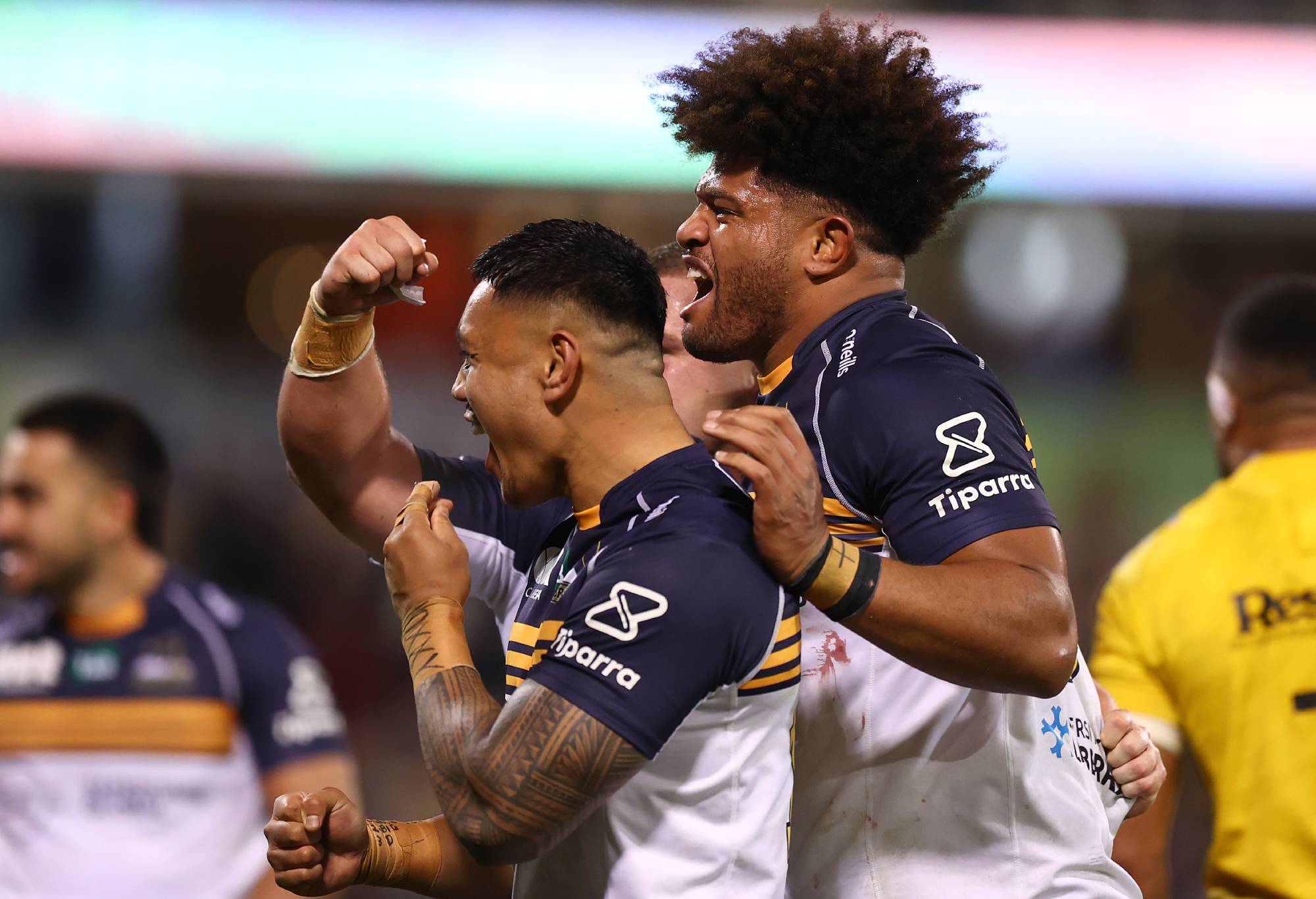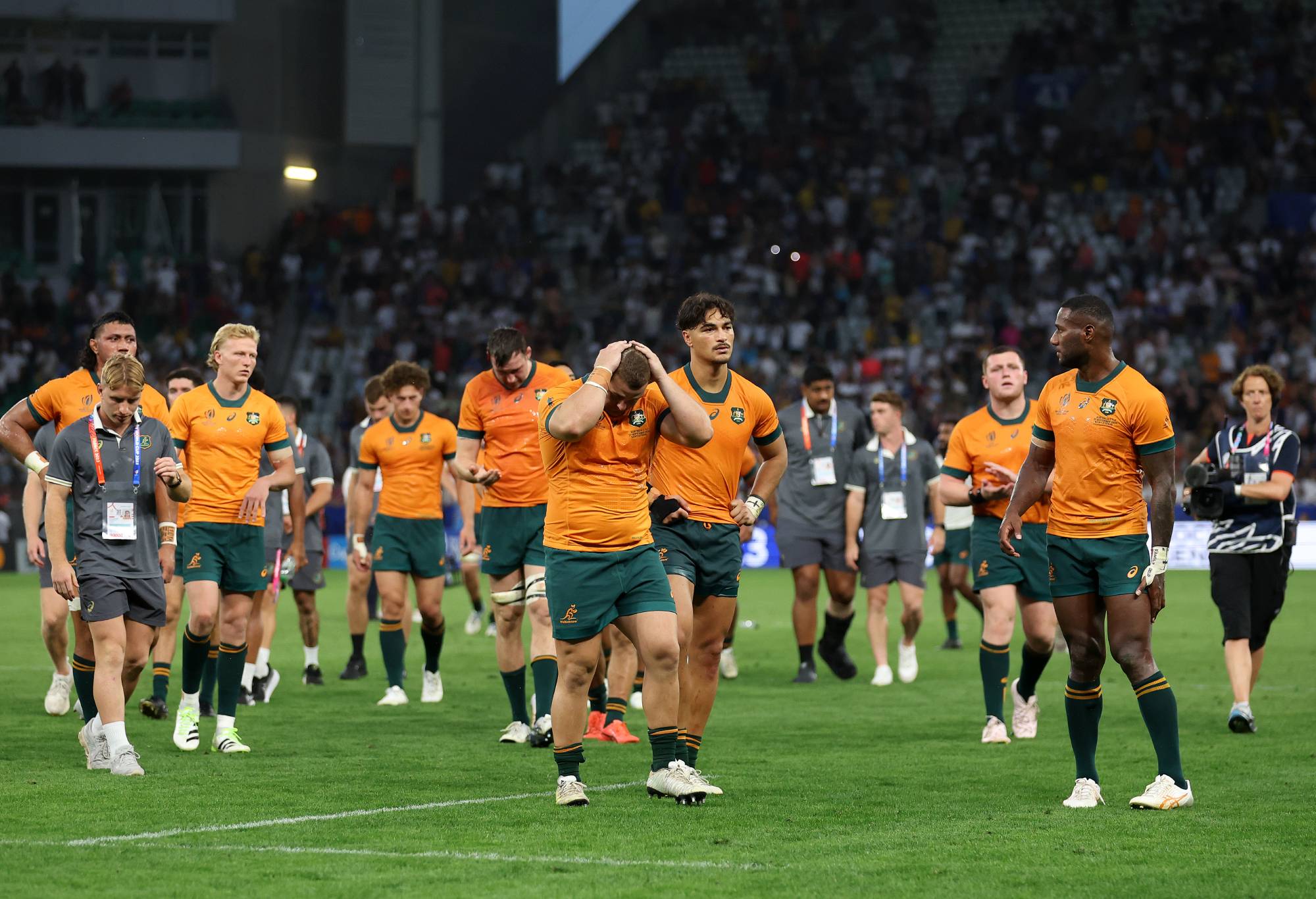Hats off to Fiji. They outplayed Australia in nearly every facet of the game.
They played with power, speed, and precision, all backed up by taking the points when they were available.
While disappointing, it wasn’t a surprise that they beat the Wallabies, especially after both Taniela Tupou and Will Skelton were ruled out.
But let’s not kid ourselves. I doubt that having Michael Hooper, Quade Cooper, and/or Len Ikitau in the team would have made a big difference. Likewise, I doubt that having Dave Rennie as coach would have made a difference.
Why?
Over the past two decades, regardless of coaching changes or player selections, it’s evident that the core problem runs deeper. It’s the whole rugby eco system in Australia that’s the problem.
It is good to see that Rugby Australia, Super franchises, member unions, and the players’ association, recognise this and are trying to revamp the way rugby is managed. Let’s hope they get cracking as soon as possible.

Eddie Jones. (Photo by Warren Little/Getty Images)
To get sustained success we need to establish strong structures that cultivate depth. The structures should be designed around the principle that better players have opportunities to play against better quality opposition, not the current situation where Super Rugby players go back to Hospital Cup or Shute Shield.
In my opinion, there needs to be a seven-tier structure, as follows:
1. Wallabies
The Wallabies are responsible for creating interest and generating money. They are the main revenue generator through broadcasting, sponsorship, and merchandise.
If NZR can get $200 million in broadcast and sponsorship, there is no reason RA need to settle for $80 million.
Without over-egging it, rugby in Australia can only be viable if the Wallabies start winning regularly and RA get their total revenue up to between $150-$200 million per year.
2. Super Rugby Pacific (SRP)
The purpose of SRP should be player development and creating a pipeline of Wallaby-ready players. While engaging fans is nice, it is secondary to player development. In the foreseeable future, I understand the SRP agreement is to keep the current five teams.

Brumbies players celebrate winning the Super Rugby Pacific Quarter Final over the Hurricanes. (Photo by Mark Nolan/Getty Images)
3. Super Rugby Australia (SRAU)
The issue with SRP is the season is too short. To increase the length of time players play in a high quality competition, a domestic competition should follow SRP. This would reduce the need for players like Noah Lolesio to play overseas, or Harry Wilson going back to the Hospital Cup. This will allow our Super Rugby players to play together more, coaches to coach (and learn) more, and the strength and conditioning people to have more time to work with their players.
4. Academy/Reserve Grade National Competition
The purpose of this competition is to bring emerging players into a system that helps teach them to be better. The cost to run it should be seen as an investment instead of a cost. If every dollar spent in 2024 provides two dollars in increased revenue in 2029 (because the Wallabies are winning again), then this is a great investment that will pay dividends for years to come.
NSW and Queensland could potentially field two or three teams, with the ideal being 10-12 teams across Australia.
5. Premier Rugby (Shute Shield, Hospital Cup, etc)
This purpose of Premier Rugby is fan engagement and tribalism. Cross-competition matches and involvement from regional representative sides could be added to enhance its appeal, but it’s primarily about the fans. Let’s be honest, someone in Penrith or Wagga isn’t going to care that Randwick are playing the Tuggeranong Vikings.
Make sure of your place in the stands to see the British and Irish Lions in 2025. Tour packages on sale now at Wallabies Travel

The Wallabies react after losing to Fiji at the Rugby World Cup. (Photo by Catherine Ivill/Getty Images)
6. Club Rugby
The purpose of club rugby is to foster the love for rugby rather than seeking Super Rugby or Wallaby prospects. It’s all about mateship and camaraderie (not to mention the friendly rivalries with the opposition that you’d belt during the game and drink with after the game).
Rugby Australia should support clubs and provide exposure to Super Rugby and national players. I have great memories of the time when Tim Gavin came to train with us. As young adults we were still like kids in a lolly shop.
7. Junior/Schoolboy Rugby
Schools and junior clubs play a pivotal role in developing rugby’s future stars. Clubs and coaches need more support. It isn’t just about money, but resources. There should be comprehensive coaching resources available – I was looking for a training video during the season and thought it truly bizarre that Rugby Australia requires volunteer coaches to pay to access some of their training videos.
Schools and clubs shouldn’t have to pay for staff (usually their lower tier contracted players) from the super rugby franchise to go to schools and run clinics.
Have more fan days, connections with academy players and Super Rugby teams. More needs to be done to inspire young players.
Central contracting
Central contracting of Super Rugby players is a good step but it is but one part of the puzzle. There needs to be a genuine commitment for Rugby Australia to setup the right training. For example, there needs to be a dedicated front row academy, a kickers academy and a coordinated approach to strength and conditioning.
































































































